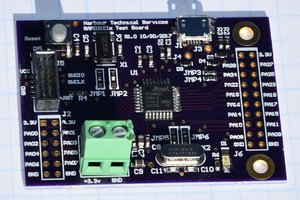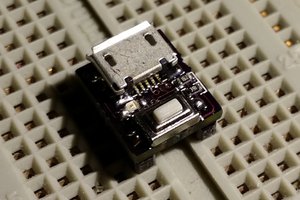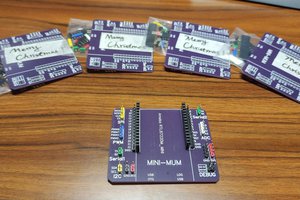This project is about an opensource FPGA breakout board up to 50K LUT. It is designed with KICAD and optimized for small quantities and hand-soldering:
. 2 layers
. QFP FPGA (not only easier to solder, but also easier to verify the assembly)
. as few parts as possible
. parts as big as possible (using reversed packages for caps)
. 1.27mm pin header
. lots of optional Gnd
. Density options in K LUT: 4,8,16,25, 40,50
The two package families 04-25 and 40-50 have a different QFP pinout, but the board has the same pin header breakout for both package families. Both options are managed inside one KICAD design. The signals/pins that differ, need to be connected before GERBER plot.
The breakout board has 1.27mm pinheader that can be populated single-row or double row. The double-row option provides more ground pins, the single-row option has some ground pins and can be used on bread boards or for breaking out to 2.54mm double row.
The size of the footprints and their distances to each other are optimized for hand soldering.
Details: See the README file inside schematic and the layer "Dwgs.User" in the PCB file.
Ideas for add-on modules: HyperRAM (www.digikey.com/product-detail/en/issi-integrated-silicon-solution-inc/IS66WVH8M8BLL-100B1LI/706-1466-ND/6004083hy), ADV7513 HDMI, ADC (AD9235, AD7193, ...), Baseboard with PMODs
What distinguishes this FPGA board from others:
Most FPGA boards that are available on the market, provide either a lot of IO pins and Gnd IOs through special connectors (0.4mm pitch and 0.5mm pitch) or they use 2.54mm pinheader with only a couple of Gnd pins. Those 2.54mm headers are acceptable for connecting low-speed IO modules, but the board becomes relatively huge due to the 2.54 pitch and the Gnd impedance to addon-modules is bad.
There are many opensource FPGA boards available. Most of those lack the option for at least average logic densities up to 50K LUT. However, those boards that provide a decent amount of logic, are hard to make by hand in single piece quantities. There are many reasons for this:
. More than 4 layers
. Small parts
. Many parts
. Thight footprints
. BGA packages
. Designed with expensive/proprietary layout tools

 Bharbour
Bharbour

 SimonXi
SimonXi